Small classic cars that are big on personality are something of a specialism for Britain’s car makers. The Triumph Herald is no exception. It looks charming and of an age, the way it drives will put a smile on your face along your favourite country lane and there’s plenty of choice, with a saloon, coupé, convertible or estate. It makes a great starter British classic car for those wanting to get into the scene, or indeed those wanting to relive their childhood and own the same make of car they grew up travelling in the back seat of.
To launch its new car with a fanfare, there could be no better place than the Royal Albert Hall in London. This is where Triumph chose to unveil its new small car in 1959, and the Herald needed all the boost it could get.

After all, hot on the heels of its April launch, BMC introduced the radical Mini and Ford introduced the sharply styled Anglia. As a result, small cars were big news and buyers were keen to get their hands on them with a newfound awareness of fuel costs following the Suez Crisis in 1956.
Triumph had been chosen by the Standard-Triumph group as the badge for its small car for the looming 1960s as it was felt it was a bit more chic than Standard. The old 8 and 10 models from Standard were what the Herald was replacing, even though it used the 10’s 948cc engine at its launch.
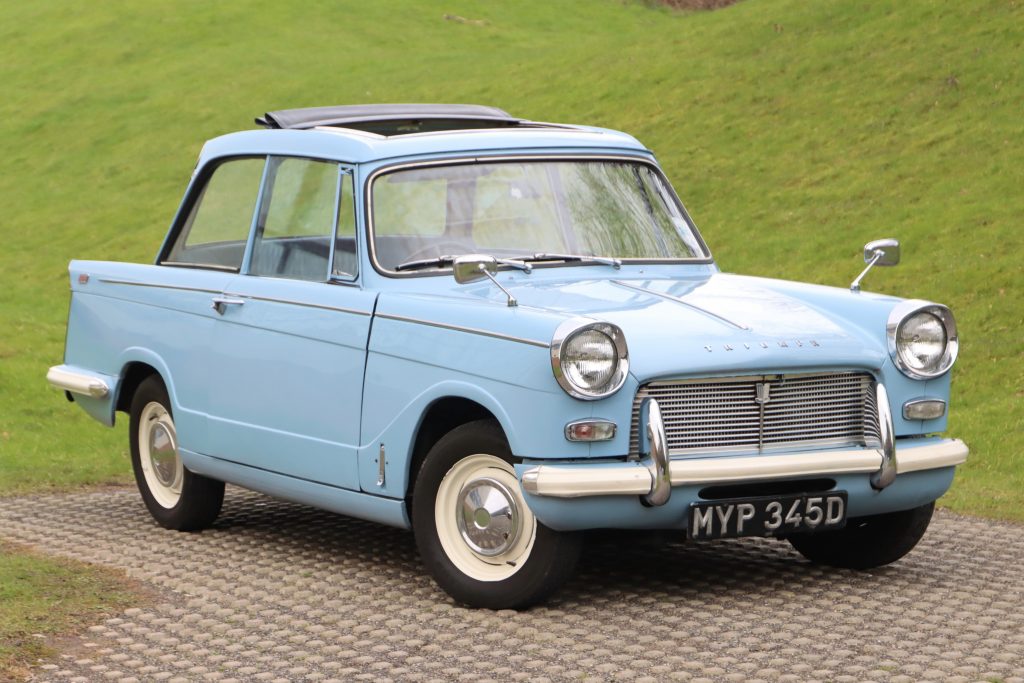
This was placed in a separate chassis, which was a necessary measure when Triumph found itself without a major body supplier after BMC bought up its previous subcontractor, Fisher & Ludlow. BMC’s boss Leonard Lord made it clear to Standard-Triumph that it would not provide new bodies, so the Herald needed a different solution. The answer was that separate chassis with a body made up of individual panels that could be produced by smaller suppliers and assembled at the Triumph factory.
This was all masterminded by Harry Webster at Triumph, and he also chose the technical specification and styling for the Herald. This meant the now-notorious rear swing axle with transverse leaf that could see the inner wheel tuck under during hard cornering. It also saw Webster bring in Giovanni Michelotti – who also worked on the Triumph Stag – to style the car, though Triumph did alter the front end to its own tastes.
Even if the underpinnings of the Herald were decidedly old hat next to the new Mini, the Triumph’s neat lines, airy cabin, and generous space for passengers and luggage made it popular. It brought in younger buyers to the company, helped by its £702 price. A Mini was just £496, but the Herald was viewed as a more premium choice, and Ford worked out that BMC was losing money on every Mini it sold to begin with.
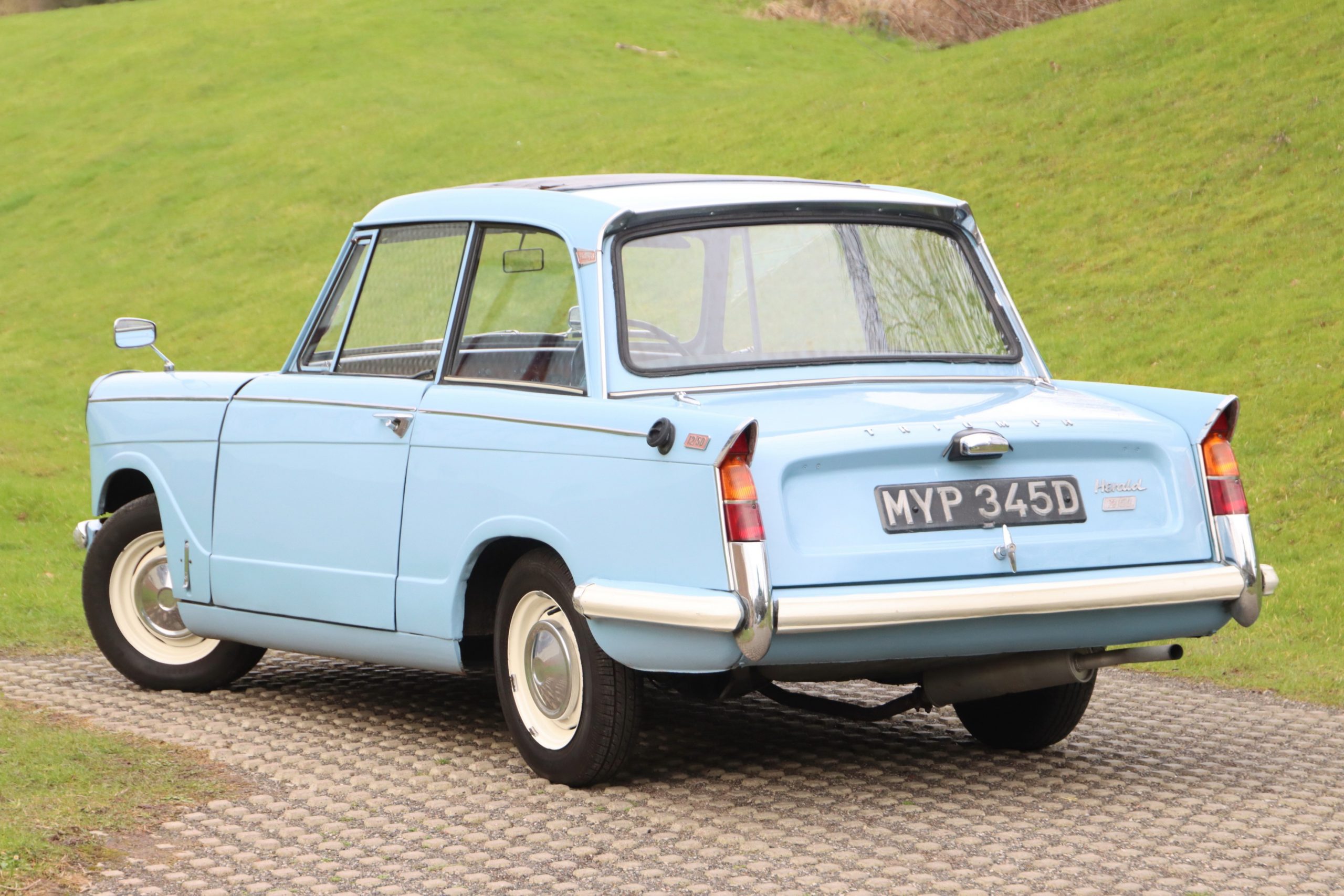
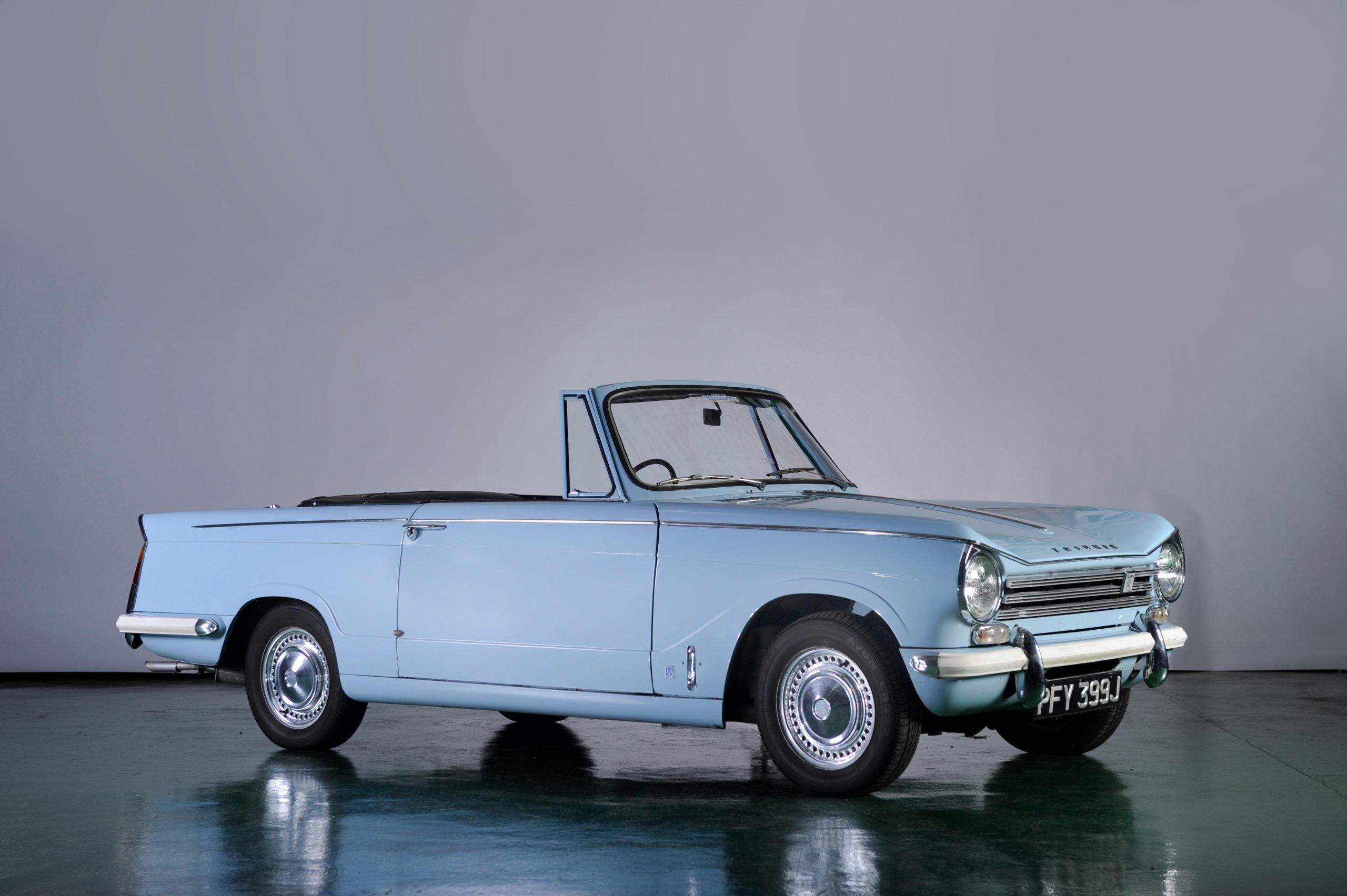
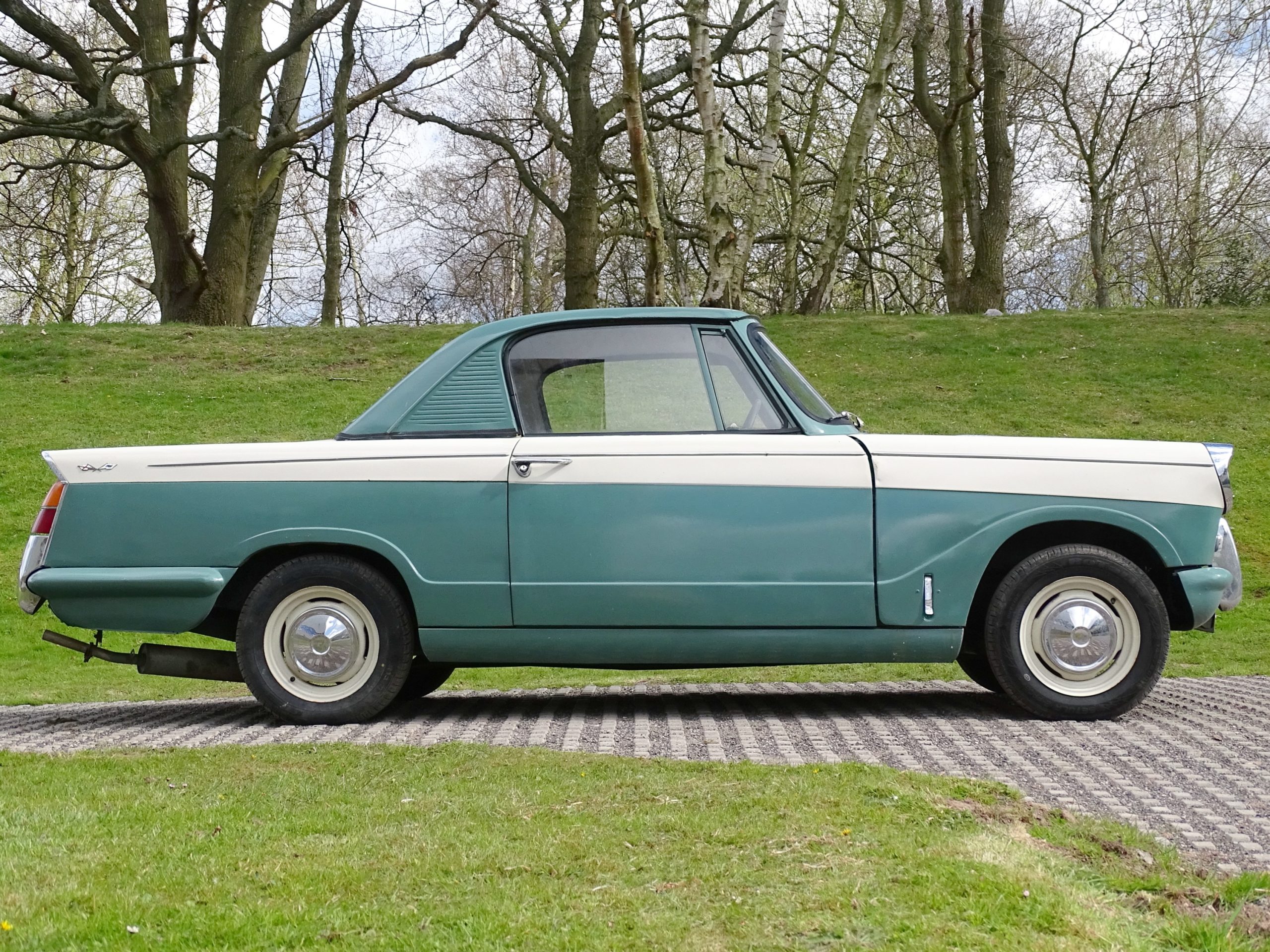
Initially, Triumph sold the Herald as a saloon or coupé. The saloon made do with a single carburettor version of the 948cc engine and a meagre 35bhp, though it could offer 36mpg. For the Coupé, a twin carb engine was used that lifted power to 39bhp and its 0-60mph time of 23.6 seconds slashed seven whole seconds from the saloon’s meander over the same measurement.
Triumph used the twin carb engine for the convertible that arrived in early 1960, while a year later the budget Herald S was added at the same time as the 1200, which used an 1147cc version of the earlier 948cc unit. These cars are easily identified by their laminated wood dash where the original Herald made do with a plain black dashboard.
Triumph was now on a roll and an estate model joined the range in March 1961. The Courier van arrived at the beginning of 1962, while the six-cylinder Vitesse pitched up in May. The changes to the Vitesse chassis were also incorporated into the Herald’s, giving more secure handling.
Then, in 1963, the Herald 12/50 was launched with more power, peppier performance, and front disc brakes. It also had a folding sunroof as standard, along with a heater and windscreen demister to make it a more practical car.
In 1967, the 13/60 replaced the 12/50 and brought with it a new front end, while the Vitesse received the 2-litre engine from the GT6 in 1968. The saloon 13/60 lasted until the end of 1970, while the convertible and estate models soldiered on into 1971 before they were supplanted by the new Dolomite and Toledo ranges. In all, more than half a million Heralds of all types were made, which makes finding one today easy, and we’ll stick with the Herald here rather than include the Vitesse.
What’s a Herald like to drive?
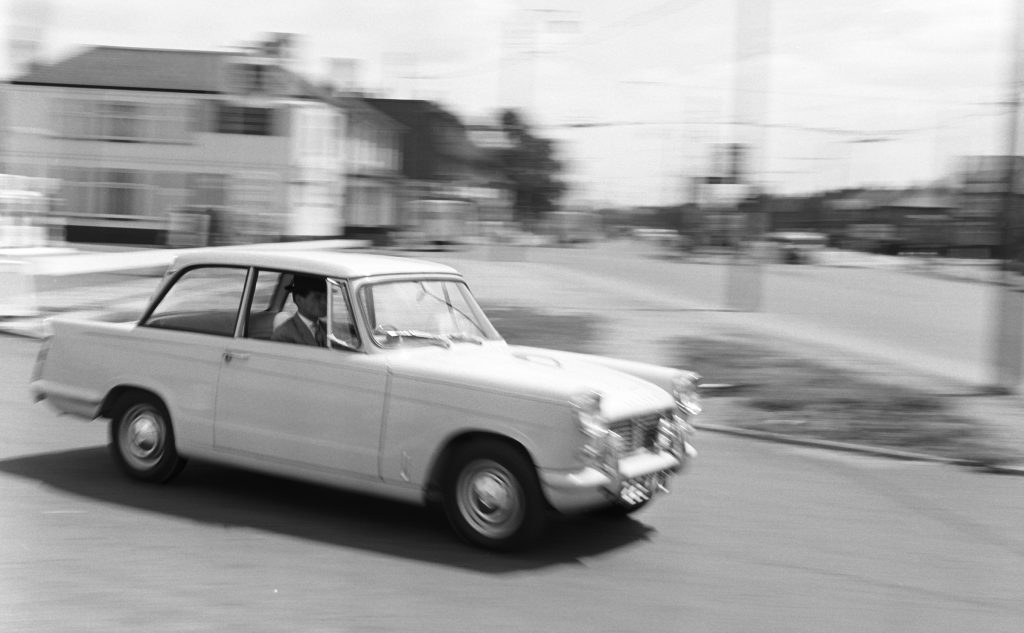
The Herald may not have had the sophisticated design of its Mini rival, but it doesn’t show up in the way the Triumph drives. Even the 948 model feels reasonably peppy around town, though if you want to press on further, it’s best to choose a Herald with one of the larger engines. The 13/60 is the best for acceleration and relaxed cruising among busy traffic, but the 1200 is not far behind and there are more 1200s around to choose from.
All have a precise four-speed manual gearbox, though there is no synchromesh on first gear, so best to stick with second at low speeds until you come to a stop to avoid any unwanted graunches. Braking on early cars is by drums all round, which are adequate, but the disc brakes of the 1200 and subsequent Heralds are much better.
In town, the Herald’s incredibly tight turning circle of 25 feet (7.62 metres) makes it very easy to steer along congested streets. The rack and pinion setup also gives good feel on the move and light turning at low speeds, so it hides its 1950s origins very well.
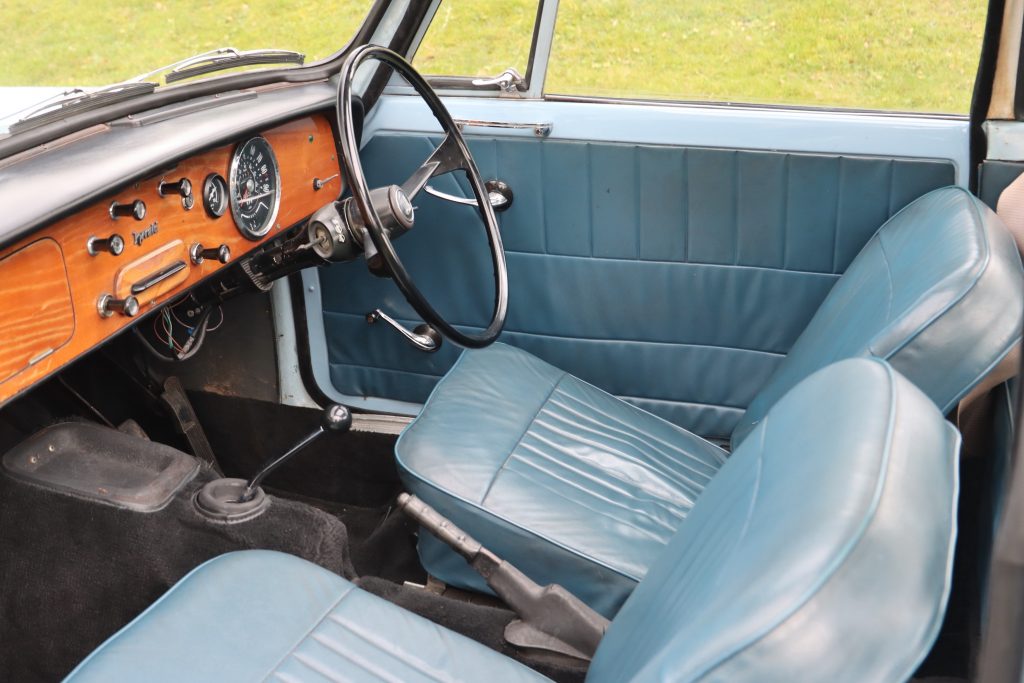
The suspension is good at soaking up the lumps and bumps of most roads, but just beware of the rear suspension design’s limits if you start to throw the car about. It’s not as bad as some will have you believe, but it can lead to snap oversteer in the damp. However, there are kits available to lower the rear spring and solve this issue, and they are worth their money.
Herald saloons are every bit as refined as the Ford Anglia, so using the Triumph as an everyday car is perfectly possible and sensible. So long as the car is solid and rust-free, you shouldn’t hear any squeaks or rattles from the body over uneven roads. It’s the same with the convertible, but you will notice quite a lot of buffeting from the wind at higher speeds with the roof down. Still, it’s a small price to pay for a good looking four-seat convertible that is still within affordable reach.
Choose the rare estate or Courier van versions and they offer considerable load carrying ability, but all Heralds have a decent boot. Rear seat space is also good and three-point belts can easily be added to keep the kids safely in place. As for creature comforts, the later the car is, the more it will have. Very early Heralds were bordering on sparse and the S model was pared back even further. A 1200 is a better bet, while the 13/60 has the twin instrument dash that is shared with the Vitesse models.
How much does a Triumph Herald cost?
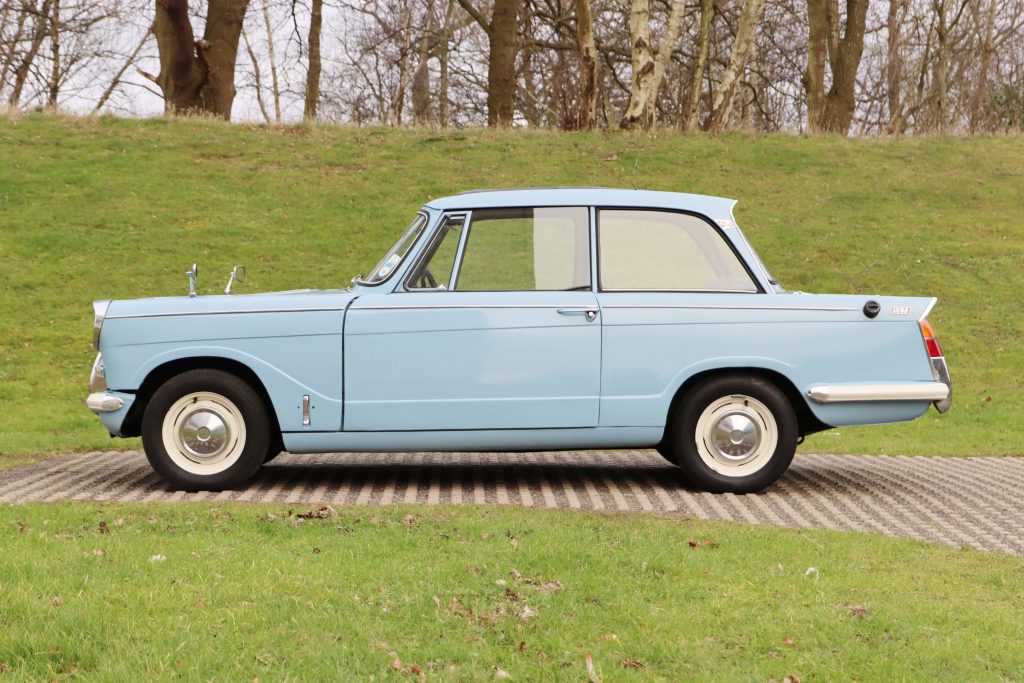
The Herald 948’s rarity, thanks to its short production life and desirability as the first of the breed, means prices are stronger for this model than others. Browse the Hagerty Price Guide to get a feel for values, but you should reckon on £3000 for a usable 948 saloon that needs some tidying, while an immaculate example will be double that. Go for the convertible and you’ll spend £3500 on a fair one and £12,500 for a car in excellent condition. The coupé sits in between, with prices at £3500 for a decent car and £8000 for a superb version.
The 1200 and 12/50 can both be found for £2500 in running and driving condition, but the best fetch £6000 for a saloon. Add a third on for a convertible model, while the rarity of the estate and Courier van put their values on a par with the drop-top’s. Curiously given the 13/60 saloon is probably the easiest Herald to live with today, saloon values are lower than for others in the line-up, so expect to find a usable one from £2000. Even very smart 13/60 saloons are around £6000, while the convertible in tip-top shape should make £11,000. A presentable open-top needing some improvement should be around £6000.
What goes wrong and what should you look for?
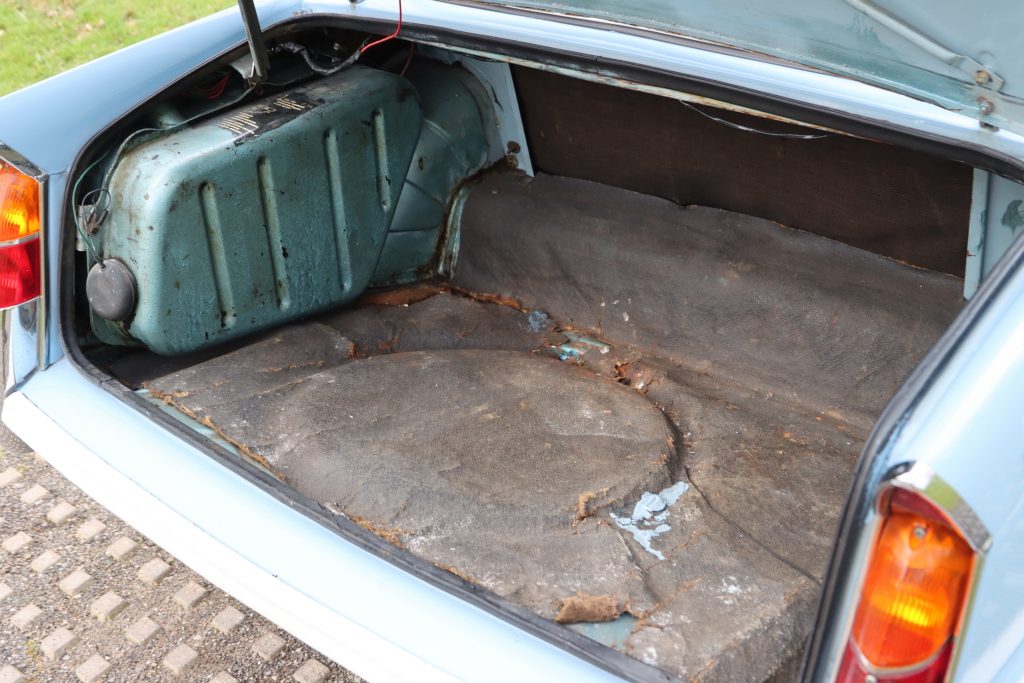
Given its age, it’s not going to come as any surprise that rust is the first thing to look for with any Herald. Start with the chassis and get underneath to look at every inch of it, especially the front and rear outriggers that support the body. If these are shot, the body will sag, so a quick check for this is to see if the doors open and close freely with someone sitting in the front. Also see if the panel gaps are even around the doors; if they aren’t, take it as a warning sign of serious corrosion underneath. Luckily, the Herald’s chassis is simple to repair and restore.
The body also rots very ably, so inspect it closely, but happily there are plenty of repair panels for most sections of bodywork. Check the wing and door bottoms, A-pillars, floorpans, inner rear wings, and sills, though these are not structural on the Herald. Also make sure that any convertible is the genuine article and it’s easy to remove a saloon’s roof. Convertibles have a CL in their identity number, whereas a saloon has a DL identity.
Engines in the Herald are tough and reliable, so most checks are the usual ones for smoke on start-up and any rattles or leaks. You will need to check for crankshaft end float, so ask a helper to press down on the clutch pedal as you watch the front pulley. If there’s discernible movement, a new thrust washer should solve the problem so long as the original has not dropped out and allowed the crank to run against the engine block. In this case, you’ll be looking at a replacement engine. Gearboxes are tough, so just be sure they engage smooth and quietly.
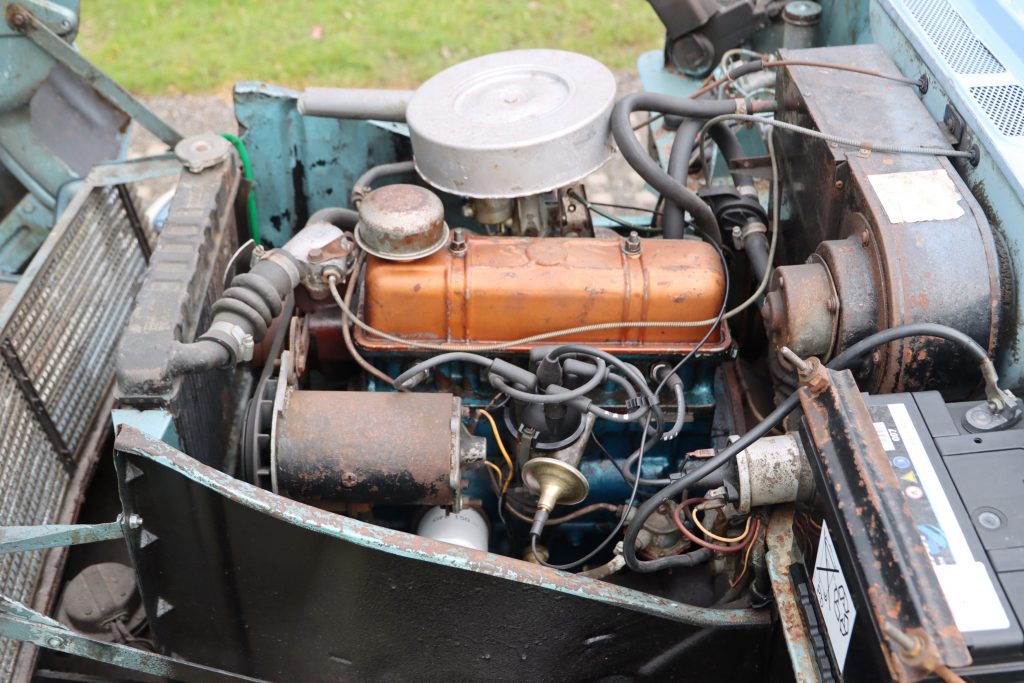
Access to the engine is brilliant on the Herald thanks to a clamshell bonnet hinging forwards. As a result, there’s no excuse for missed servicing or sloppy front suspension. The double wishbone front end is simple to rebuild and all parts are available, and it’s the same for the brakes and steering. The front trunnions are the only weak spot here and should be lubricated with the correct EP90 oil rather than grease.
The rear suspension is simple to work on and many cars will already have been upgraded with a Spitfire 1500 ‘swing spring’ or one of the kits to prevent the rear wheels tucking under during hard cornering. If this hasn’t been done, it’s a DIY job to fit and costs around £340 from Canley Classics.
Scruffy interiors are straightforward to restore with replacement trim kits for every part of the Herald’s cabin. Convertible roofs are also available and cost from around £400 for a vinyl one or £500 for mohair. It pays to check the wooden dash is in a good state as repairing it can be expensive, though a replacement can be had for around £230 for the original finish or £275 in burr walnut. Or use a restorer.
Which is the right Herald for you?
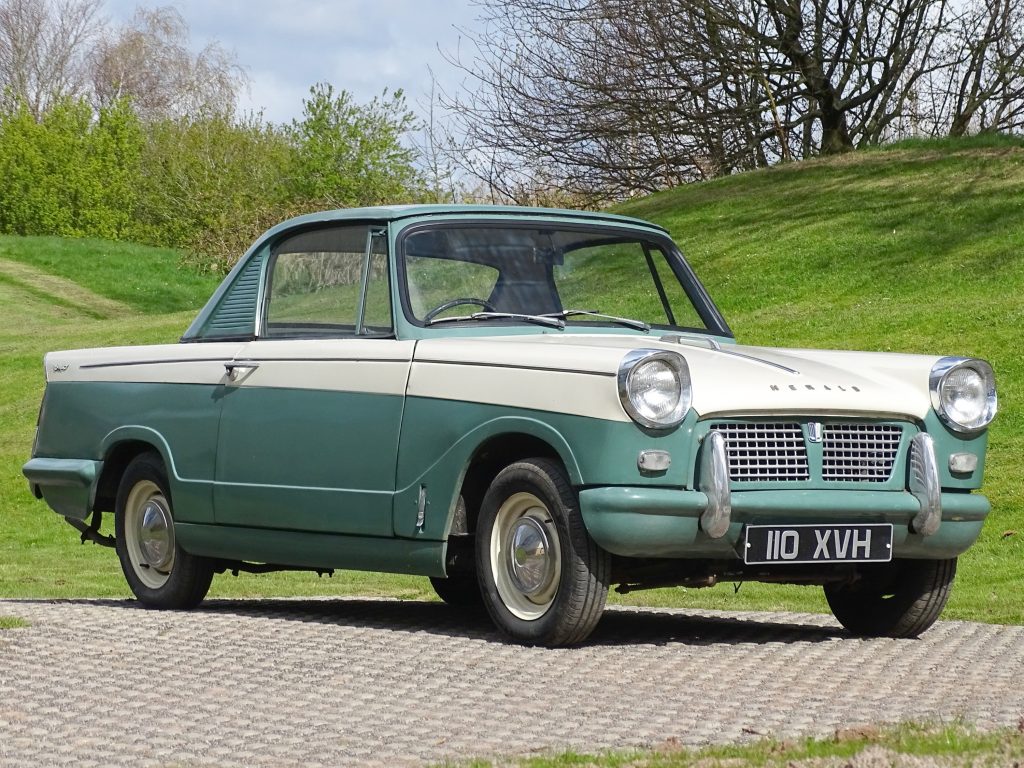
The Herald 948 coupé is closest in looks to the original Michelotti design proposal, so for some it’s the most sought-after model. However, it’s only a two-seater, so despite its better performance than the 948 saloon it does have its limitations. The convertible has the same engine as the coupé but offers four seats and the added appeal of open-top driving, so it would be our choice of these early Heralds.
For those seeking to use their classic on a more regular basis, the 1200, 12/50 and 13/60 models are ideal. The 13/60 has the liveliest performance and will cruise at 65-70mph on the motorway. A saloon will be more refined at higher speeds and offers greater security if you need to park on the street, but the open-air appeal of the Herald Convertible is obvious.
While the Mini is undoubtedly better to drive on twisty roads and the Ford Anglia offers endless performance tuning opportunities, the Herald can be subtly upgraded for everyday use. The Triumph also offers more cabin and luggage space than its rivals, and an interior with a more upmarket air.
Read more
11 alternatives to the Jaguar E-Type
Rare Triumphs complete one man’s collection of a lifetime | Barn Find Hunter
Buying Guide: Triumph TR4, TR5 and TR6










very interesting and to the point .
Good article! Enquiring minds want to know – Did any 12/50 or 13/60 LHD estate wagons make it Stateside?